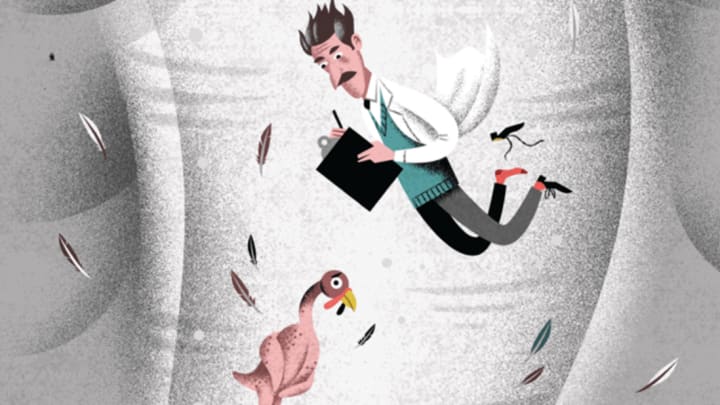When a tornado ripped through Mayfield, Ohio, in 1842, local farmers noticed something weird: Afterward, turkeys, geese, and chickens were roaming around naked. The reports sparked the imagination of mathematician and professor Elias Loomis, who wondered whether defeathered chickens could be a trustworthy way to measure tornado wind speeds. To find out, Loomis killed a chicken and blasted it out of a small cannon at 341 mph. Indeed, the bird left behind a plume of feathers, which floated into the wind. Unfortunately, the carcass had been torn to bits, which merely convinced Loomis that a tornado must spin a little more slowly. (Most tornadoes don’t exceed 110 mph, although the fastest—which struck an Oklahoma City suburb in 1999—reached 318 mph.) With that, he deemed that chicken nudity was a reliable way to determine the power of a passing tornado.
More than a century later, Bernard Vonnegut—a scientist at SUNY Albany and brother of the novelist Kurt—was skeptical of Loomis’ claim. With somewhat more scientific rigor than a chicken cannon, Vonnegut placed a few birds in a wind tunnel, flipped on the fan, and watched the feathers fly. He discovered that the fowl lost their fluff inconsistently, and he concluded that chickens were not reliable gauges of wind speed.
But this was hardly Vonnegut’s most important contribution to science. He was published heavily in academic journals and would even go on to coauthor a study on “The Smell of Tornadoes,” investigating why wind funnels sometimes smell like a freshly lit match. Most important, he pioneered modern cloud-seeding techniques by discovering that silver iodide crystals produce moisture and encourage rain—proof that, unless you’re a chicken caught in the grasp of science, some clouds really do have a silver lining.
